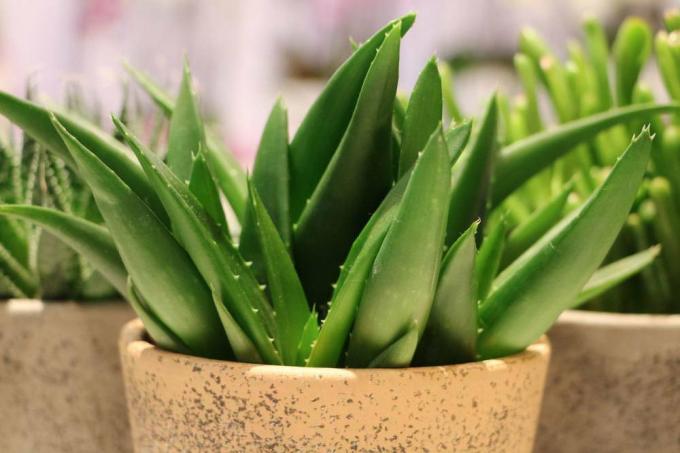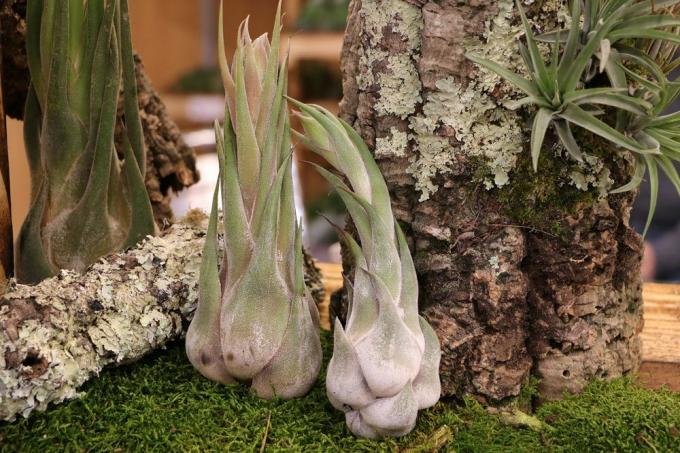
table of contents
- Succulents in nature
- Watering succulents properly
- Common care mistakes
Succulents are plants that are able to store large amounts of fluid either in the leaves, the trunk or the roots. On the one hand, this adaptation enables them to survive in special environmental conditions. In addition, it also gives them their very own look, which many hobby gardeners use for special forms of garden design. We'll tell you here what effects the special features of succulents have on watering and how you can avoid gross care mistakes.
Succulents in nature
Although the popular, sap-rich plants can come from a wide variety of regions, the prevailing conditions there have many of the same properties over and over again:
- Well-drained soils with high drainage capacity
- Low water storage capacity of the substrate
- High proportion of coarse soil components, on the other hand a low proportion of humus
- Intense sun exposure
- Low humidity
- Overall low frequency and amount of precipitation
- Water supply through rare, but then intense precipitation, e.g. B. Thunderstorms or heavy rain

Attention: Especially when it comes to humidity, there are individual representatives of the succulent family that - in contrast to the usual environment - thrive in regions with very high humidity. If such a plant is to be grown at home, there are different options for the water supply.
Watering succulents properly
Assuming that the succulent plant ideally finds similar conditions in the home pot or bed, as in their natural environment, it is also quite easy to get the optimal watering from their natural water supply derive:
- During the growth phase (usually March to approx. September) water seldom, but thoroughly
- Outside the growth phase, reduce the frequency and duration of watering
- Interval between watering phases 5 to 7 days, for deciduous succulents 1 to 3 days
- Avoid waterlogging
- Pour excess water off the saucer in the case of potted plants
- Let the substrate dry off between waterings
- Ideally, use rainwater or stale, not too hard tap water
Attention: Drying off does not mean drying out completely. Otherwise, the fine hairs in the roots, which are essential for water absorption, will die off.

Note: Tillandsia (bromeliad plants) and a few other succulents obtain their water mainly through suction scales on the leaf surfaces. It can make sense to spray the plants daily instead of just watering them in order to keep the am natural location to imitate the prevailing high humidity and to increase the water absorption optimize.
Common care mistakes
Since the representatives of the succulent family are generally quite undemanding and therefore easy to keep, Recurring errors - apart from incorrect site conditions - are mainly limited to watering the Plants. In order to avoid significantly damaged or even completely dead plants, the most common mistakes and their consequences are briefly named here:
Waterlogging in the pot
- Caused by: insufficiently permeable substrate, too much water, no water drainage in the pot
- Leads to: Root rot and plant death
- Cause: mold or Putrefaction of the sensitive root areas
Watering damage to leaves
- Created by: flat pouring from above
- Leads to: initially yellowing, over time increasingly soft leaves, later withering
- Cause: the interaction of water and solar radiation impairment of the sensitive leaves up to the burning of the leaf surfaces
Pouring damage to the handle or stalk
- Arises from: Pouring into the rosette of the succulents
- Leads to: stagnant water on the stalk or stem, in the long run the whole plant will die off because the stalk rots
- Cause: rapid spread of putrefactive bacteria or molds with rapid damage to the plant

tip: Succulent plants can vary greatly in terms of their water requirements. As a rule of thumb, it can be stated that thicker leaves mean less water is required than thinner leaves. If you arrange plants with similar leaf thicknesses, watering is made much easier, as each individual plant does not have to be specifically taken into account.
